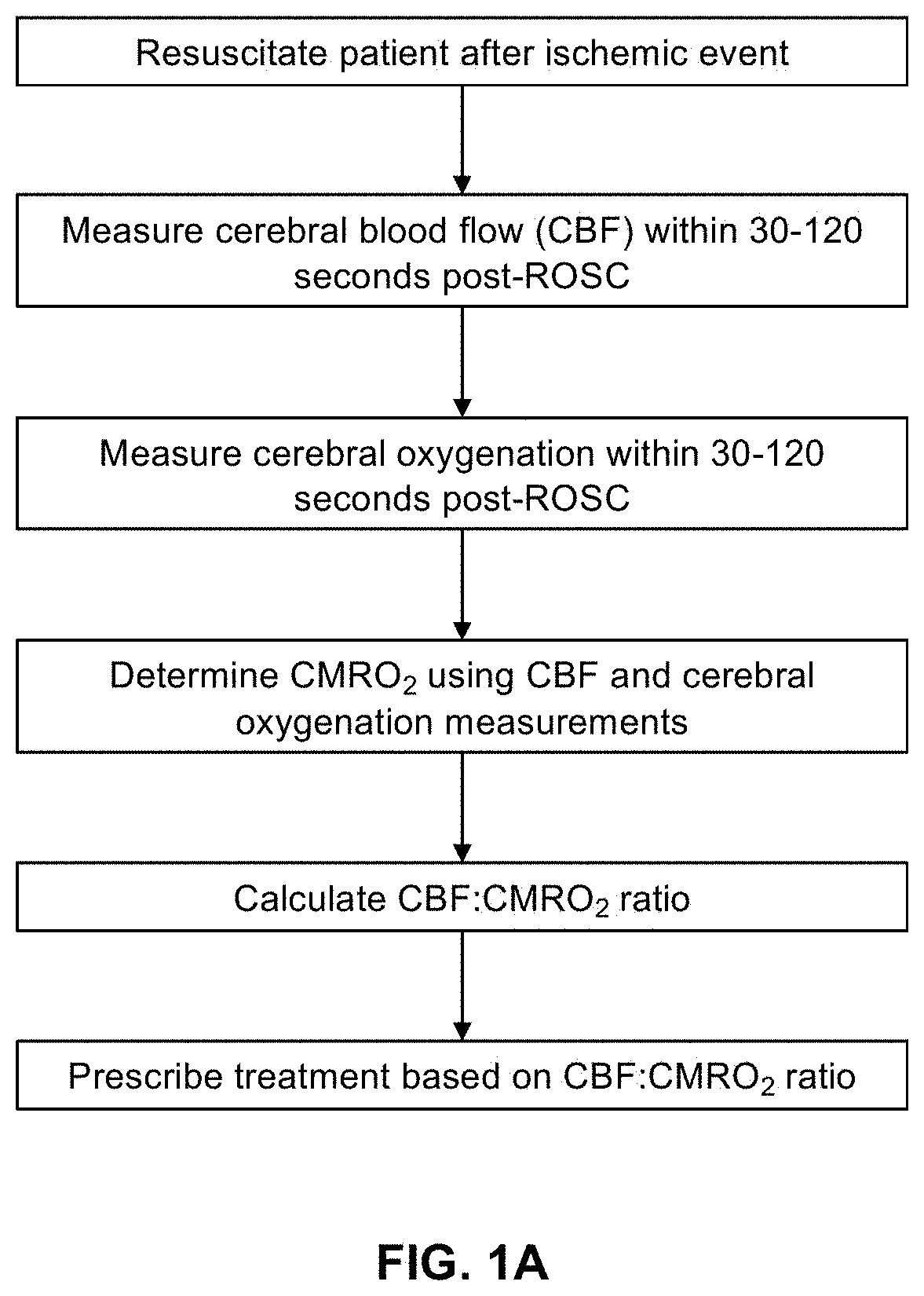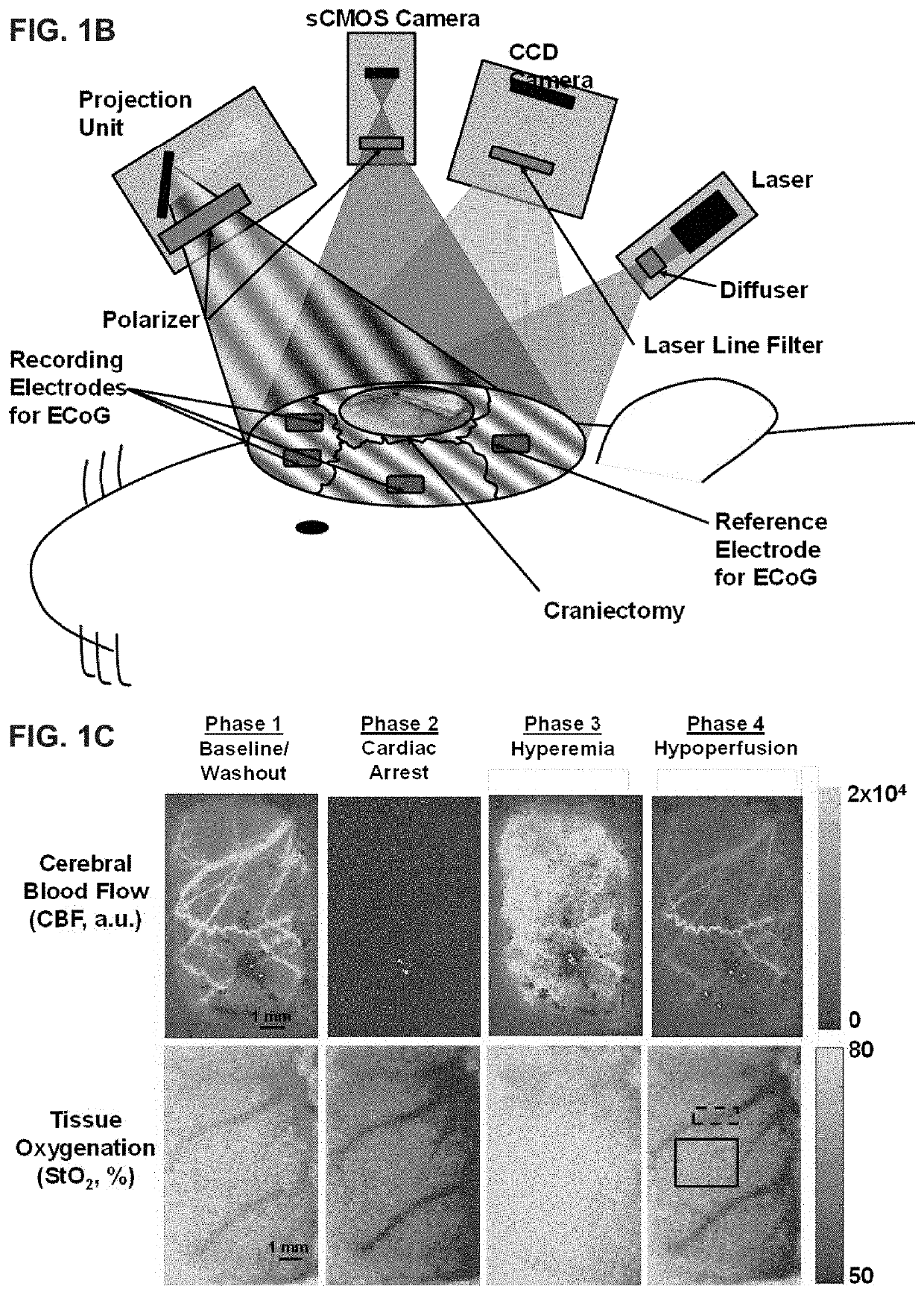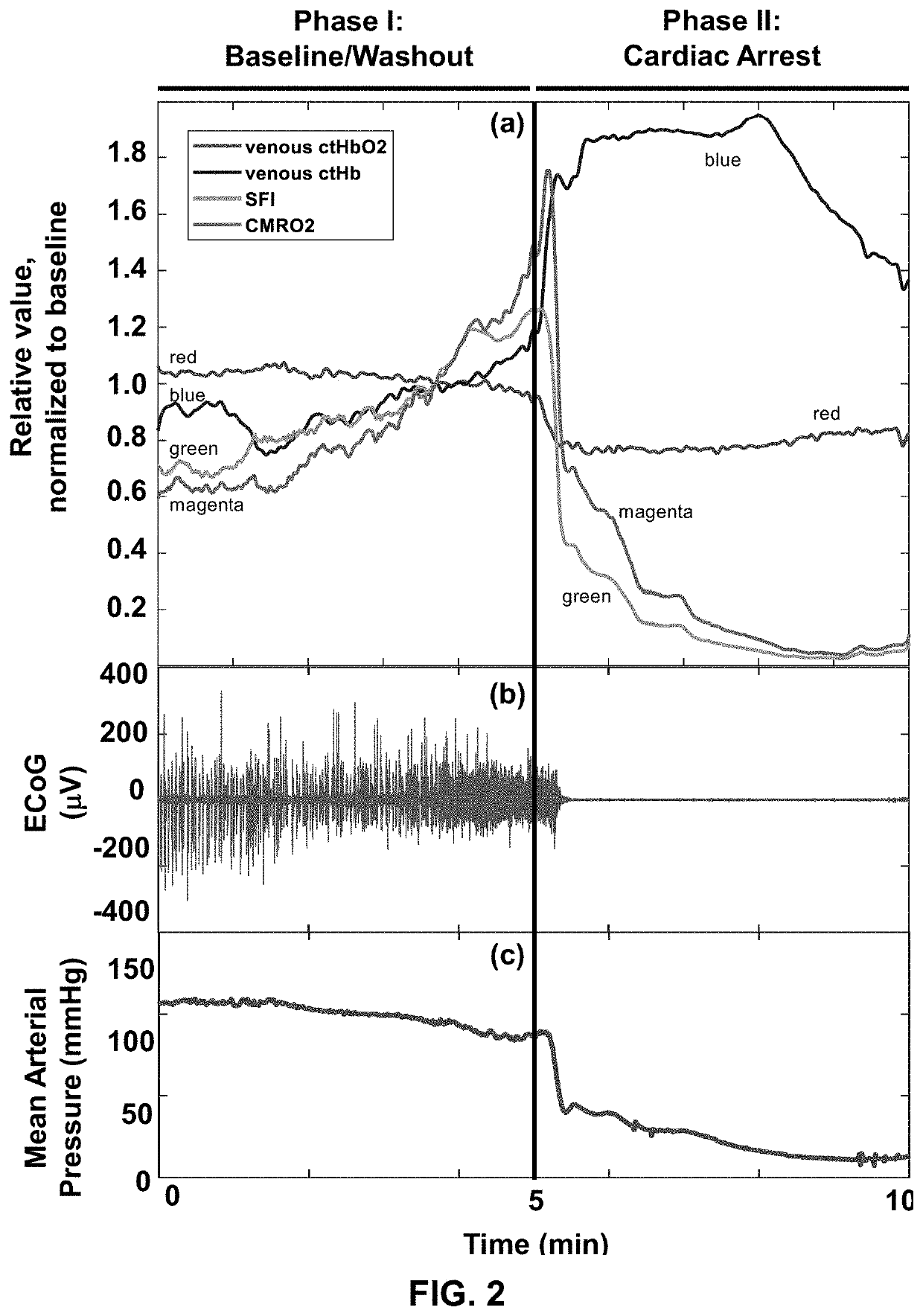Real-time methods to enable precision-guided cpr to improve neurological outcome and predict brain damage after ischemic injury and reperfusion
- Summary
- Abstract
- Description
- Claims
- Application Information
AI Technical Summary
Benefits of technology
Problems solved by technology
Method used
Image
Examples
example 1
[0102]The following is a non-limiting example of the present invention. It is to be understood that said example is not intended to limit the present invention in any way. Equivalents or substitutes are within the scope of the present invention.
Methods
Animal Preparation
[0103]All procedures described in this protocol were approved by the Institutional Animal Care and Use Committee (IACUC) at the University of California, Irvine (protocol number 2013-3098-01). Ten male Wistar rats (weight ˜300-400 g) were used in this study. In the animal preparation procedures, rats were fasted with three pellets the night before the experiment as standard procedure for the CA experiments. On the day of the experiment, rats were anesthetized with isoflurane and endotracheally intubated to enable controlled breathing with a ventilator. Then, epidural screw electrodes were implanted for ECoG, and a partial craniectomy (4 mm right-to-left×6 mm anterior-to-posterior) was performed to expose a portion of ...
example 2
[0131]The following is a non-limiting example of the present invention. It is to be understood that said example is not intended to limit the present invention in any way. Equivalents or substitutes are within the scope of the present invention.
Introduction
[0132]There is a significant clinical need for quantitative methods to measure cerebral metabolism in vivo to assess damage and recovery in brain-injured patients. Current techniques for quantifying brain metabolism are typically expensive, bulky, and unable to provide high temporal resolution. Diffuse optical spectroscopy and imaging have the potential to rapidly and portably monitor cerebral blood flow (CBF) and brain oxygenation (StO2) simultaneously. Combining these measurements can quantify the cerebral metabolic rate of oxygen (CMRO2) to measure brain metabolism on an absolute physiological scale (units of μM O2 consumed / min) without the need for physiological perturbations (e.g., gas challenges). The present example introdu...
PUM
 Login to View More
Login to View More Abstract
Description
Claims
Application Information
 Login to View More
Login to View More - R&D Engineer
- R&D Manager
- IP Professional
- Industry Leading Data Capabilities
- Powerful AI technology
- Patent DNA Extraction
Browse by: Latest US Patents, China's latest patents, Technical Efficacy Thesaurus, Application Domain, Technology Topic, Popular Technical Reports.
© 2024 PatSnap. All rights reserved.Legal|Privacy policy|Modern Slavery Act Transparency Statement|Sitemap|About US| Contact US: help@patsnap.com










